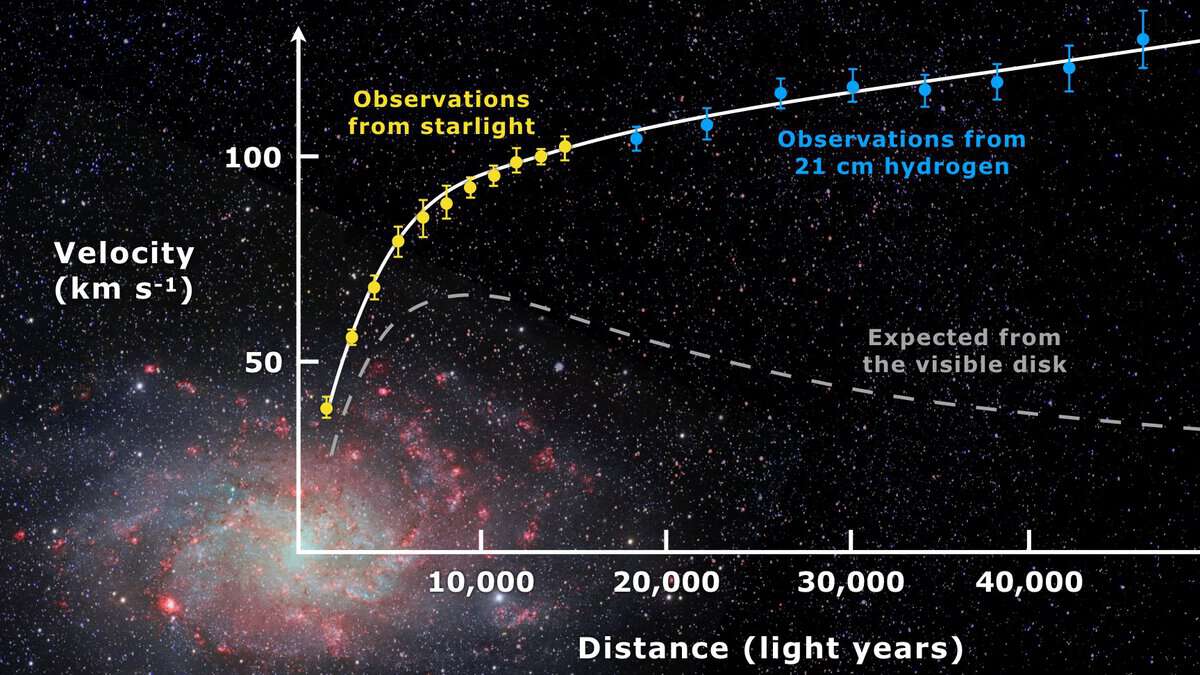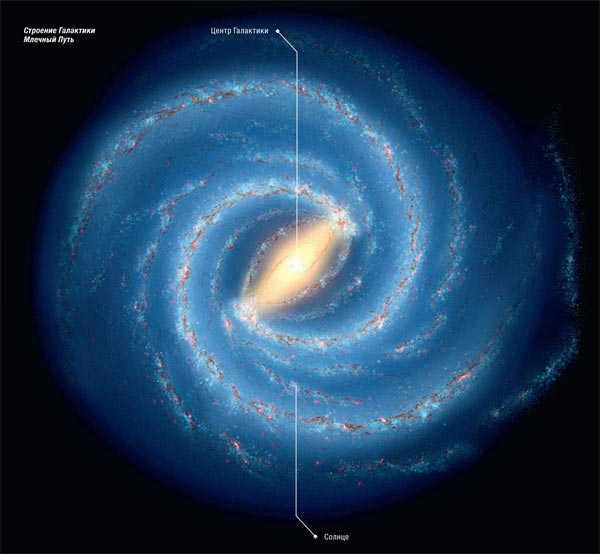
At present, our capabilities for interstellar travel are extremely limited. The idea of reaching even the closest stars seems like a distant dream, let alone venturing into the far reaches of the galaxy. It is highly improbable that we could construct a spacecraft capable of transporting us to the Andromeda Nebula, given our current level of technological advancement. However, perhaps there is a possibility of finding a suitable celestial body that is already in motion and hitching our wagon to it, so to speak. To explore this option, we would need to investigate whether there are any objects within a radius of approximately one hundred light years from Earth that are moving at speeds high enough to enable long-distance travel and potentially even allow us to venture beyond the boundaries of our own galaxy, the Milky Way.
Halo stars
The investigation into superfast celestial entities is crucial in unraveling the mysteries of the Universe’s development. It is important to note that the structure of galaxies did not instantaneously materialize, and the presence of stars within them emerged gradually. Within these stellar clusters, there exist both nascent entities that are currently evolving, as well as ancient ones that originated under vastly different circumstances than those observed today. A comprehensive examination of the disparities between these celestial bodies will undoubtedly grant us further insights into the life and genesis of our vast cosmos.
The Milky Way is a disk galaxy, and the view we see in the sky is only a glimpse of the galaxy’s profile. However, the disk is not the only part of the Milky Way. There is also a halo, which is a massive structure that extends for hundreds of thousands of light years. The halo is mostly composed of dark matter, which is made up of unknown elementary particles. These particles have weak interactions with each other and with ordinary matter, causing them to be distributed evenly throughout the halo. Although we cannot directly observe the halo, it is where the majority of the Galaxy’s mass is concentrated.
Nevertheless, the Milky Way also boasts an impressive celestial ring, known as the stellar halo, where a portion of the stars reside beyond the galactic disk but within the expansive sphere encapsulating it. The stars inhabiting the halo are the eldest in our cosmic neighborhood, serving as the initial building blocks from which our galaxy took shape. Subsequently, the disk and the galactic center, known as the bulge, emerged, harboring matter already infused with heavy elements that facilitated the birth of a subsequent generation of stars. Furthermore, the halo contains minimal amounts of gas, resulting in the absence of new star formation over the past billion years. By examining these long-lived stars, scientists gain insight into the elemental composition of the Universe during its nascent stages.
Imagine if we could construct a spaceship capable of flying to the nearest halo star and becoming its companion. Once we turn off the engines, we would be able to ascend with the star high above the plane of the Milky Way. However, this journey would be incredibly long. Traveling at a speed of 300 km/s, it would take us 1000 years to cover just one light year. So, in order to significantly rise above the galactic disk, we would have to wait tens of millions of years. Even then, we wouldn’t be able to escape the grasp of our own galaxy, as our speed would gradually decrease due to the gravitational field exerted by our stellar system. Eventually, we would find ourselves back within the galactic disk. While this is certainly better than nothing, perhaps there are other more enticing options in nature for long-distance travel.
Merging Galaxies: A Phenomenon of Galactic Interaction
It is not uncommon for galaxies to engage in intricate interstellar dances, occasionally resulting in the merging of large spiral galaxies. While astronomers are continuously striving to detect and study these mesmerizing pairs, they also employ the power of supercomputers to simulate and model the merging process.
The merging of galaxies is a gradual and protracted affair, spanning billions of years. Consequently, observing the different stages of this cosmic ballet is a formidable challenge. However, through meticulous modeling, scientists can gain valuable insights into the intricate mechanics at play.
The merger unfolds in a series of distinct stages, as the galaxies initially hurtle towards each other at remarkable speeds.
During the merger, the tidal forces exerted by the gravitational interaction between the galaxies give rise to stunning tails and cause a profound transformation in their overall structure.
Ultimately, the outcome of this celestial encounter is a single, unified galaxy, with the central supermassive black holes of the merging galaxies destined to merge with one another in due course.
Of particular interest are the most massive black holes, whose enigmatic nature continues to captivate astronomers worldwide.
Accurate measurements have been acquired for the two supermassive black holes. The measurements themselves are not unexpected, but here is a documentation. Each of the holes has a mass of 10 billion solar masses. Previously, information about these types of holes could only be obtained through computer simulations. It is noteworthy that this is not just a record, but a fresh challenge for models that explain the origins and development of these entities. Both holes are significantly more massive than what is typically determined using the conventional correlation between the velocity dispersion of galaxies or the luminosity of their bulge and the mass of the central object.
An explicit and unequivocal elucidation for the apparent close correlation between black hole masses and galaxy properties is not currently accessible. It is hypothesized that the expansion of the black hole’s mass and the spherical component of its accompanying galaxy occur simultaneously. In the majority of observed galaxies, the correlation is sufficiently strong, indicating the presence of conventional mechanisms for mass augmentation. The proponents of this finding contend that the correlation breaks down for the most massive black holes (and galaxies) due to the pivotal role of an alternative mechanism for mass expansion.
Observations of quasars indicate that in the distant cosmos, we are able to witness the actions of active galactic nuclei, where massive black holes reside. However, in our immediate vicinity, we have yet to observe such objects in a tranquil state. Recently, a pair of colossal entities have been detected at a distance of approximately 100 megaparsecs, equivalent to over 300 million light years. The study of these entities should provide insight into the mechanisms by which they accumulated mass during the early stages of the universe, when vast galaxies were being formed.
1. A star that consistently resides within a disk
2. A star positioned high in the halo
3. A star located in the halo that transits through the disk
4. A star in rapid motion, escaping its original location
5. Hypervelocity star
In the 21st century, a new discovery has emerged – the identification of other exceptionally rapid stars. These stars boast speeds exceeding 700 km/s, more than double the velocity of halo stars, allowing them the potential to escape the galaxy indefinitely. Termed hypervelocity stars, the question arises: how did they acquire such extraordinary speed?
Let’s explore how a star can acquire its velocity. In order for this to occur, there must be a transfer of momentum between the star and other celestial bodies. Typically, the larger the mass of the interacting object, the easier it is to accelerate. Within our galaxy, the most massive entity is the central black hole, possessing a mass equivalent to several million times that of our sun. If a pair of stars come into close proximity with the black hole, the gravitational interaction and exchange of momentum can cause their connection to break, resulting in one of the stars attaining a tremendous velocity – reaching speeds of up to thousands of kilometers per second!
There are currently multiple hypervelocity stars known, each with speeds surpassing 700 kilometers per second, allowing them to venture far beyond the confines of our galaxy by overcoming its gravitational pull. Take, for instance, one such star named HE 0437-5439, which is hurtling towards the nearest galaxy, the Large Magellanic Cloud. Now that’s what I call convenient transportation! Just envision the possibilities of settling on a planet orbiting such a star. With a new sun to provide endless energy, there would be no need to construct a spaceship. Instead, we could cultivate a civilization right there, on a planet revolving around this hypervelocity star. Once settled, the journey to another galaxy would commence. Granted, the voyage is not a short one and could span tens or even hundreds of millions of years, but everything would occur organically. A thriving civilization could embark on this remarkable “stellar ride”.
Schematic flight path of a hypervelocity star. Photo: MPI FOR ASTROPHYSICS
Stars on the run
Regrettably, all hypervelocity stars are situated at a considerable distance from us. This is primarily because the central region of the Galaxy is located far away, making it unlikely for a hypervelocity star to travel directly towards us. However, there is something intriguing happening in our immediate celestial vicinity. If you gaze up at the night sky, you can spot what are known as fleeing stars.
Stars that escape the galaxy are unable to leave. The key point is not just that their speeds are not too high, but also that they have short lifespans. Massive stars quickly deplete their thermonuclear fuel reserves and therefore have lifespans of only millions or tens of millions of years, unlike smaller stars that can live for billions or tens of billions of years. This creates a spectacular sight: the star soars above the galactic disk and then detonates in a supernova. This explosion results in the formation of a neutron star or black hole. Astronomers who study pulsars (neutron stars that emit periodic bursts of radiation) have long pondered how some of these pulsars could attain such great heights at a young age. It was not the pulsar itself, but rather the star that gave birth to it.
The ultimate primary halo star
A star has been found in the constellation Leo that has an extremely low level of heavy elements. This star has the second lowest amount of iron and the lowest amount of carbon compared to all other stars. As a result, this star sets a new record for having the least amount of mass in elements heavier than helium. If a star is discovered with only half as much mass, it would challenge the theories that suggest primary stars cannot be small-mass stars.
Quickest in speed
Hundreds of kilometers per second is an impressive speed. But what about speeds greater than that? The record for such speeds is held by the most mysterious and intriguing objects in the universe – neutron stars. Neutron stars are formed after a supernova explosion, when the core of a massive star collapses. The result is a tiny 20-kilometer ball with a mass greater than that of our Sun, and a density even higher than that of an atomic nucleus. These stars also possess incredibly strong magnetic fields, gravity, and exhibit superfluidity and superconductivity in their interiors.
During a supernova, an immense amount of energy is released in an almost instantaneous burst. In fact, the energy released during a supernova is greater than what the Sun will emit during its entire lifespan of 10 billion years! It is highly unlikely that such explosions would occur symmetrically around the center of the star. If the explosion is not symmetrical, the resulting object will experience a “kick” or a sudden change in momentum. A neutron star with the mass of the Sun can be propelled to speeds of hundreds or even thousands of kilometers per second.
This is not the only explanation for the incredibly fast motion of neutron stars. In 1970, the Soviet astronomer Iosif Shklovsky was the first to propose the idea that neutron stars could be accelerated as a result of an asymmetric supernova explosion. However, other possible scenarios for neutron stars acquiring high speeds have also been proposed. One such scenario was formulated by Nikolai Chugai in 1984. Chugai suggested that the bulk of the energy from a supernova explosion is carried away by neutrinos, which are extremely light and challenging to detect particles. Neutron stars could emit these neutrinos in the form of two jets, which can again be asymmetric. Imagine two opposing jets with different strengths. If one jet is significantly more powerful than the other, it could accelerate the neutron star to high velocities.
There are alternative concepts, but ultimately, neutron stars have no trouble exceeding speeds of 1000 km/s. Furthermore, there have been documented instances of such occurrences. This year, the discovery of two potential record breakers was announced. Firstly, John Tomsick and his co-authors made public their findings of a neutron star that could potentially reach speeds close to 3000 km/s. However, further investigation and confirmation are still required. On the other hand, Aida Kirichenko from the Ioffe Institute of Physics and Technology in St. Petersburg and her colleagues have produced more reliable results. They have measured the speed of another neutron star, specifically a pulsar, to be approximately 2000 km/s. This particular star, located within our Galaxy and around 6500 light years away from us, could also be considered a potential “space locomotive” as it is destined for intergalactic wandering.
The CID-42 system is incredibly fascinating. It consists of a pair of recently combined galaxies. Within its core, there are two clusters. It is logical to assume that these clusters are two black holes accompanied by all the necessary surroundings. However, the position of the bright sections does not align with what is observed, indicating the possibility of an alternative explanation. Following the merger of two black holes, the resulting object may experience a significant recoil velocity, reaching speeds of up to thousands of kilometers per second. This phenomenon is known as the gravitational-wave rocket effect. It is probable that in the CID-42 system, the expelled black hole and the central star cluster it left behind can be differentiated. This hypothesis is supported by X-ray observations. Scientists acknowledge that it is not possible to completely dismiss the notion of two merging black holes or the ejection of a black hole due to scattering on a pair of black holes, rather than the gravitational-wave rocket effect. However, these alternatives appear less likely. Further comprehensive research is required to fully understand this system.
Gravitational Wave Propulsion
There exists an extraordinary phenomenon that enables the acceleration of colossal objects, weighing billions of times the mass of the sun, to velocities reaching hundreds or even thousands of kilometers per second: a gravitational wave rocket. Let’s envision a pair of immensely massive stars, which we have previously discussed. They reside in close proximity, taking turns detonating as supernovae and generating black holes. In certain instances, the system may endure. For instance, if each explosion results in a mass loss of less than half of the system’s current mass, or if the newly formed black hole is propelled in a direction opposing the orbital velocity. What happens next? The black holes orbit a common center of mass while simultaneously emitting gravitational waves, in perfect accordance with the principles of general relativity.
The source of the radiation must originate from something. A pair of black holes doesn’t possess much wealth. As they emit gravitational waves, they gradually draw closer and their orbit becomes tighter. The outcome is an eventual merger. In order to detect bursts of gravitational waves from such events at the beginning of the 21st century, the LIGO (an American project) and VIRGO (a French-Italian project) detectors were constructed. It is highly likely that within the next 3-4 years, which coincides with the centenary of the general theory of relativity, these mergers will be discovered. This will ultimately serve as confirmation of the existence of black holes. However, there is another crucial aspect to consider. Black holes in a pair cannot be identical, as they possess different masses. As a result, the process of merging and emission is asymmetrical. Gravitational waves carry away energy and momentum. If the momentum predominantly leaves the system in a specific direction, the resulting black hole merger will travel in the opposite direction. It’s that simple! Nonetheless, the mechanism itself was only invented in the 1960s. Astrophysicists, on the other hand, only “remembered” it in the 1990s, and not in relation to massive binary stars, but rather in relation to galaxy formation. According to current models, stars are the first to appear in the Universe. However, they are not exactly like the stars we observe around us. This is because the matter from which they originated is still in its primary state. It primarily consists of hydrogen and helium, with very few heavier elements. These stars can be incredibly massive – hundreds of times more massive than the Sun. They have short lifespans and eventually give rise to black holes. Subsequently, new stars form, and this process continues. However, during this time, the structure grows: the small “building blocks” that formed the very first stars combine with one another, eventually leading to the creation of galaxies.
Two black holes with varying masses revolve around a central point of mass. They emit gravitational waves, causing them to draw nearer to each other and spiral inwards (1). However, the emission of waves is not symmetrical: the holes emit more waves forwards (in the direction of their motion), and their paths are not closed. Furthermore, the velocities of the holes differ due to their differing masses (2). These waves carry away not just energy but also momentum. In order to uphold the principle of conservation, the entire system begins to move in the opposite direction to where the waves have carried more momentum. Consequently, when the black holes eventually merge, the resulting entity will be in motion, despite the fact that the entire system was initially at rest when the holes were still distant from each other. ILLUSTRATION: MAXIM CHATSKY
When blocks merge to form galaxies, pairs of black holes are created and eventually merge together. There are two potential outcomes. If the merger produces a high-speed black hole, it will be propelled away from the center of the developing structure. If it is slower, it will stay at the center. It is likely that supermassive black holes will grow from those that remain. The ejected black holes will then reside in the halo of the galaxy or travel into intergalactic space.
Let’s recall that galaxies merge with one another. We are familiar with the most stunning images of these enormous star systems intertwining. Nearly every large galaxy possesses a supermassive black hole nestled in its core. Consequently, a merger could produce a pair of colossal black holes, which would eventually join together. There was hope of observing this phenomenon with the space-based gravitational-wave observatory LISA, but due to the crisis, the project lacked funding. Escaping from a large galaxy is no easy task, although it is possible. However, the resultant black hole would need to acquire some velocity, causing it to orbit near the galaxy’s center. Given the immense mass of the galaxy, it proves challenging for such an object to break free, even if its velocity reaches several hundred kilometers per second. There is evidence to indicate that this scenario is indeed occurring.
Advancing the field of science at a faster pace
Undoubtedly, the investigation of superfast entities remains necessary not only for the purpose of resolving the practical quandary of space exploration. These entities exist outside the conventional range, therefore attesting to extraordinary phenomena transpiring in the cosmos. Swift motion enables us to discern halo stars within our own Milky Way, which bear witness to the genesis of our planet. Rapid neutron stars can provide insights into supernova detonations, while mobile black holes can shed light on the merging of galaxies. In order to propel an entity to an exceedingly elevated velocity, something exceptional must have occurred. Hence, although we are currently unable to “harness” superfast stars for intergalactic travel, they serve as a catalyst for scientific advancement.
Everyone knows that the Milky Way is the home of humanity and the hub of the solar system. It is also the residence of the stars visible to the naked eye, without the aid of any external instruments. However, there is much more to discover about this fascinating galaxy. Have you ever wondered about its size, density, or our precise location within it? Let’s delve into the captivating mysteries of the Milky Way Galaxy. There are numerous intriguing facts to contemplate.
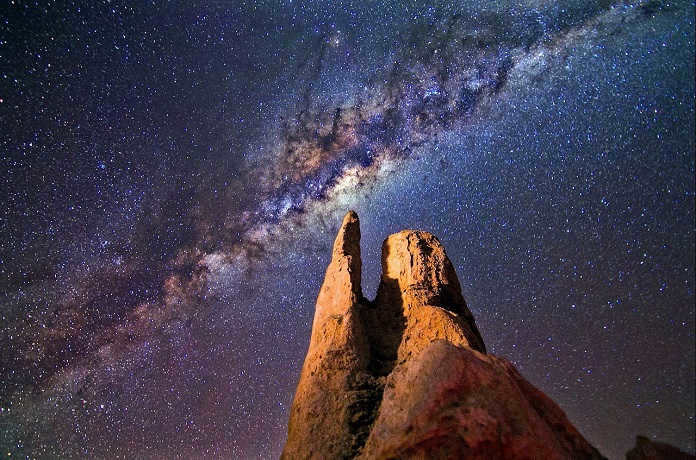
When we gaze up into the night sky, a vast expanse of light known as the Milky Way comes into view. This captivating streak, in fact, represents the core of our Galaxy. Scientists have been studying the structure of the Milky Way for a considerable period of time, and their investigations are ongoing. However, the planetary system resides on the outer edges of one of the disks, making it impossible to peer through the dense center to the other side.
The Milky Way is in constant motion, with stars, planets, dust particles, and other cosmic objects all moving together. It rotates at a speed of approximately 828,000 kilometers per hour, meaning it would take the Solar System at least 230 million years to complete a full revolution around the galaxy.
Despite its constant motion, much of the Milky Way remains a mystery to researchers. It is filled with enigmatic stars, nebulae, energy, and dark matter, with many aspects still unexplored.
We have compiled a list of 8 fascinating facts about the Milky Way that have been scientifically proven.
1. The Milky Way’s Hidden Halo
The Milky Way galaxy possesses a hidden halo that eludes direct observation. This mysterious halo is composed of dark matter, which accounts for a whopping 85% of the galaxy’s total mass. In contrast, the luminous matter that can be seen without any special instruments or a telescope represents only a mere 10% of the Milky Way’s mass. Unlike the traditional image of a divine being hovering above us, this halo is invisible to the naked eye. However, its existence has been confirmed through computer modeling that simulates what the Milky Way would be like without this enigmatic mass. The crucial factor in understanding the halo is the rotational speed of the stars within the galactic disk. The greater the mass of the galaxy, the faster these stars must be moving. If we were to assume that the Milky Way consists solely of the visible matter, then the rotation rate would be significantly lower.
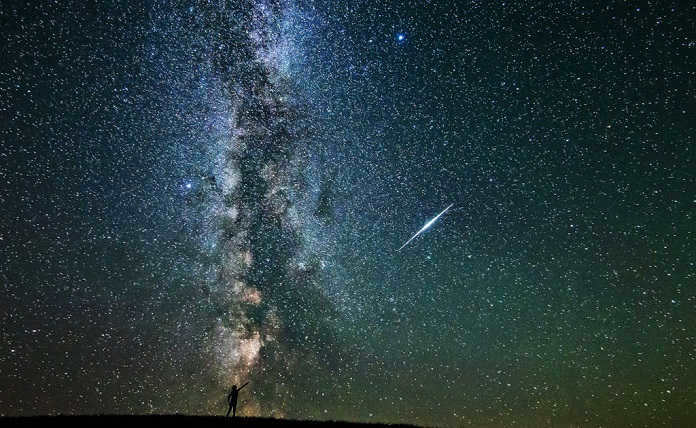
2. The Milky Way Galaxy consists of more than 100 billion stars
However, this estimation is not entirely accurate. It is likely that there are significantly more stars than this. Astronomers face difficulties in accurately counting the number of stars due to the limitations of their telescopes, which can only detect the brightest stars. Additionally, many stars remain hidden from view due to the presence of gas and dust. One potential method for estimating the number of stars in the Milky Way is by examining their rotational speed and using this information to calculate the Galaxy’s mass. By dividing this mass by the average size of a star, an approximation can be made. However, this approach will inevitably yield a rough estimate due to the vast variability in star sizes. The European Space Agency (ESA) has successfully mapped the positions of 1 billion stars within our Galaxy. Nonetheless, experts believe that this is merely 1% of the total number of stars present. Based on these findings, we can infer that the Milky Way contains at least 100 billion stars, if not more.
Undoubtedly, performing computations in space is a challenging endeavor. It is estimated to be 700 billion to 2 trillion times the mass of the Sun. Those figures are truly astronomical. The scientists examined the gravitational pull exerted by our Galaxy’s immense mass on the smaller galaxies revolving around it. Consequently, they deduced that the Milky Way’s weight is 900 billion times that of the Sun.
4. The Milky Way Galaxy contains a significant amount of dust and gas.
About 15% of the Milky Way’s luminous matter is composed of this mixture, while the majority consists of stars. The Milky Way spans approximately 100,000 light years in width, but we are only able to observe a portion of it that spans 6,000 light years. However, on occasions when light pollution is minimal, we can catch a glimpse of the Milky Way’s ring in the night sky.
Due to the abundant dust, visible light is unable to penetrate deeply, but infrared radiation can pass through this barrier. For instance, by utilizing the Spitzer Space Telescope, astronomers are able to peer through the dust and gain a clear view of the activities occurring at the center of the Galaxy, including the formation of new stars.
5. The appearance of the galaxy was not always that of a stunning, curved spiral
That is how we perceive it now. Scientists hypothesize that the current size and shape of the Milky Way were shaped by the assimilation of other galaxies that had formed earlier. The Milky Way has absorbed numerous galaxies in its journey, even though it may sound redundant, and it continues to do so.
6. A black hole is situated at the core of the galaxy
Most larger galaxies possess a substantial dark void at their core, and the Milky Way is no exception. The core of our Galaxy emits a significant amount of radio waves, which is believed to be originating from the black hole. Its radius is estimated to be 22.5 million kilometers. However, this measurement refers solely to the black hole itself.
The matter that accumulates around the black hole is referred to as an accretion disk – it has a mass 4.6 million times that of the Sun and can fit within the Earth’s orbit. Despite the fact that black holes typically attempt to absorb everything in their vicinity, the formation of stars has been observed in close proximity to this astronomical phenomenon.
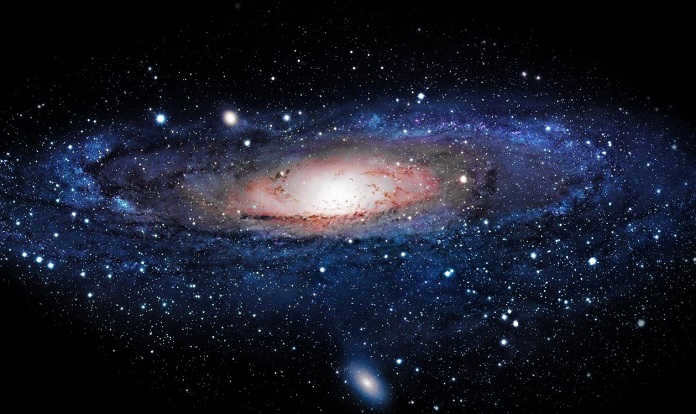
7. The Milky Way Galaxy is surrounded by 150 ancient star clusters
These star clusters are located in the visible ring of the Milky Way and orbit around its center. Some of these clusters are considered to be among the oldest in the entire Universe. The oldest known star cluster is estimated to be at least 13.6 billion years old.
8. Authentic photographs of the Milky Way can only be captured from within the Milky Way itself
As a result, astronomers do not have direct images of the galactic space. The images we come across on the internet are either processed images or pictures of other galaxies.
Don’t forget to share this post with your friends!

During the 18th century, the renowned English scientist William Herschel embarked on a remarkable endeavor: he commenced the task of tallying the multitude of stars that adorned the nighttime firmament. In the course of his meticulous studies, Herschel made a groundbreaking discovery – a vast celestial boundary known as the “galactic equator” that bisects the observable portion of the sky into two equal halves. This celestial expanse boasted the greatest concentration of stars. Furthermore, Herschel determined that the number of celestial luminaries progressively escalates as one approaches the “galactic equator” from either side of the sky. This compelling evidence substantiated the notion that all cosmic entities within the observer’s reach are interconnected, forming an immense system that is notably flattened within the equatorial region.
Herschel went as far as to create a visual representation of the Milky Way, depicting it as a stretched-out, asymmetrical cloud. Within this formation resided our sun. This was the widely accepted perception of our galaxy by the scientific community until the beginning of the 20th century.

In 1920, Dutch astronomer J. Kapteyn provided a comprehensive description of the Milky Way galaxy, which remains remarkably accurate to this day.
Exploring the Structure of the Milky Way Galaxy
The Milky Way, our very own galaxy, holds a special fascination for researchers due to its connection to planet Earth. Its study and exploration are of great interest.
Undoubtedly, the title “Milky Way Galaxy” captures our attention with its artistic charm. This name, like many others in the cosmos, has ancient roots and is derived from mythological deities.
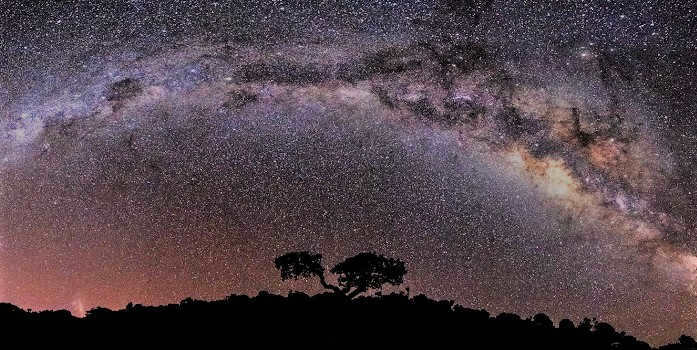
According to Greek mythology, Zeus brought his son Hercules to his sleeping wife. He intended to nourish him, but Hera pushed the infant away. However, her milk splattered into the sky, creating a streak of milk. This is actually the origin of the name of the galaxy.
Distinctive features of the galaxy
The Milky Way, or Galaxy, pertains to spiral galaxies. However, it is not an ordinary one, of which there are numerous in the universe. It possesses a lintel known as a bar in the region where the solar system resides. It is composed of the most luminous stars. They emanate from the center and intersect the galaxy precisely at the center.
It is challenging to designate the home galaxy as something exceptional, since there are hundreds of billions of other galaxies in the Universe, many of which are similar.
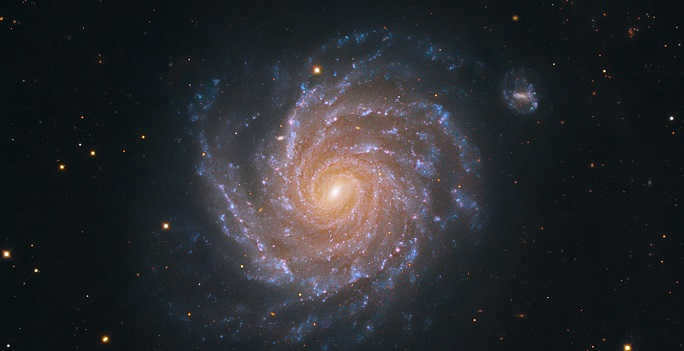
What sets this galaxy apart from others is that its spiral arms do not originate from the center of the nucleus, but rather from the ends of the junction.
These types of galaxies are classified, and ours falls into the SBbc category. Due to the medium size of the bulge in the Milky Way, its arms have a slight irregular twist.
Together with the Andromeda galaxy and the Triangle galaxy, our galaxy forms the Local Group. It is also a part of the Virgo Local Supergroup.
Weight
Certain calculations have been utilized to determine the weight of such an enormous entity in the cosmos. The foundation for this calculation was the number of stars present within our galaxy, which is no less than 200 billion, with each star weighing equivalent to the Sun. Collectively, these stars constitute 4% of the total mass of the galaxy. The weight of the gas (composed of hydrogen and helium) exceeds that of the 200 billion stars by a factor of 3. The remaining mass is made up of dark matter. The combined weight of the Milky Way is at least 3 trillion times that of the Sun. In tons, this would amount to approximately 6*1039.
Dimensions
The size of the Milky Way is approximately 1,000 light-years in thickness.
As of 2020, there have been reports from scientists suggesting that the diameter of the galaxy is around 1.9 million light-years. However, this information has yet to be confirmed.
Number of Stars
The precise count of stars within the Milky Way remains unknown. Current estimates propose that there are anywhere between 200 and 400 billion stars. Additionally, it is believed that the galaxy contains up to 100 billion brown dwarfs, which are objects intermediate in size between stars and planets. These brown dwarfs have a mass that ranges from 13 to 77 times less than that of the sun.
Thermonuclear reactions take place within the core of brown dwarfs. However, their luminosity is not comparable to that of such a celestial body. Furthermore, they are gradually shrinking and dimming. The coldest brown dwarfs have temperatures similar to that of Earth, while the hottest ones can reach up to 2800 Kelvin.
The age of the galaxy is estimated to be around 13.2 billion years.
What’s interesting is that we are able to observe a portion of the galaxy from our Earth. After all, everything around us belongs to the Milky Way.
Fascinating Facts
- The Milky Way began to form as a collection of dense regions following the Big Bang. The first stars emerged in globular clusters which still exist today. These are the oldest stars in the galaxy;
- The Milky Way is currently moving through space at a speed of 550 km/s in relation to the cosmic microwave background;
- Located at the center of the galaxy is the Sagittarius A* supermassive black hole, which has a mass 4.3 million times that of the Sun;
- Orbiting around the center at a velocity of 220 km/s, there is gas, dust, and stars. This consistent movement suggests the presence of a dark matter shell;
- In approximately 5 billion years, the Milky Way is predicted to collide with the Andromeda galaxy. Some speculate that the Milky Way is actually a binary spiral system;
The arrangement and constitution of the Milky Way
The center of the Milky Way is comprised of billions of stars. It is believed to harbor a black hole at its core.
The central bulge is situated directly within the core. It is an illuminated spheroidal segment comprising of a compact gathering of stars. The bulge fluctuates in dimensions, ranging from hundreds of parsecs to several kiloparsecs.

The galaxy’s movement is characterized by a speed that varies depending on the distance from the nucleus. The bridge, which stretches across a distance of approximately 27,000 light-years, traverses the center of the galaxy at an angle of about 44 degrees relative to the boundary between the Sun and the central region.
Composed of stars, constellations, gas, and dust, the disk of the galaxy has an estimated diameter of 100,000 light-years. However, the velocity of motion within the disk is not uniform and is influenced by proximity to the nucleus.
The disk region contains gas clouds and young constellations.
The corona (halo) of the Milky Way is comprised of globular clusters, stars, and constellations. In addition, it harbors dwarf galaxies and substantial quantities of ionized gas. What is intriguing is that the objects in the corona orbit around the central core in elongated trajectories. Furthermore, their velocities can vary, as the rotation is relatively sluggish.
The corona’s shape is roughly spherical, and it dates back to nearly the same age as the Milky Way itself.
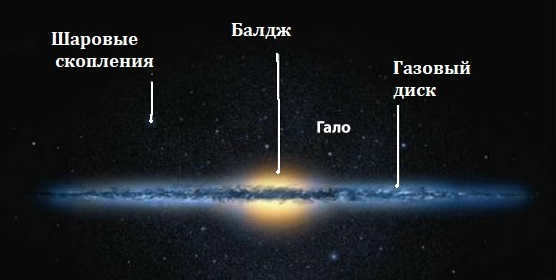
Positioned amidst the center of the galaxy and its sprawling arms, lies the gas ring that boasts an immense concentration of gas and dust. Remarkably, this region is a hotbed for the formation of new stars.
Occupying the same plane as the galaxy’s disk, the spiral arms find themselves situated within the corona. The Milky Way boasts a total of five primary arms:
The Sun, specifically, finds itself nestled within the Orion Arm. More precisely, it is positioned closer to the disk region, approximately 27,000 light years away from the galactic nucleus. Notably, the Sun is traveling at an incredibly swift pace, clocking in at around 250 kilometers per second.
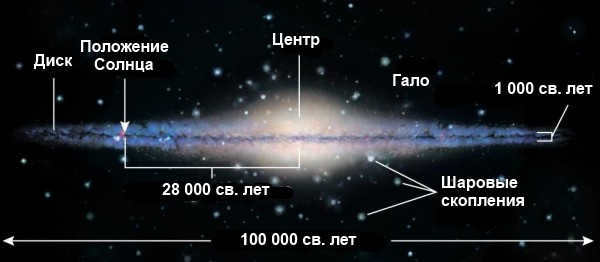
Our sun takes 240 million years to complete one orbit around the galaxy, which is equivalent to a cosmic year. This fact is truly astonishing, considering that the last time the Sun was in this particular region of the galaxy, dinosaurs were the dominant species on Earth. Throughout its lifetime, our star has made approximately 18-20 encounters with other celestial bodies during these flybys. This implies that it came into existence around 18.4 cosmic years ago, while the galaxy itself is estimated to be approximately 61 cosmic years old.
What Comes Next for the Milky Way
There is uncertainty surrounding the future of our galaxy.
At present, the Milky Way finds itself in the midst of its lifecycle, yet its ultimate fate remains unknown.
Remarkably, the Milky Way has already absorbed numerous galaxies, and currently, astronomers are observing a dwarf galaxy situated in Sagittarius.
The Milky Way and Andromeda are on a collision course.
The Milky Way is not only rotating but also moving within the vast expanse of the universe. While space is immense, no celestial body is immune to the possibility of collisions.
In approximately 3-4 billion years, the Milky Way is projected to collide with the Andromeda galaxy. Scientists predict that our galaxy will be engulfed in this cosmic encounter. However, there is no cause for concern as it poses no threat to human life.
Following the collision, a process of star formation will commence. Andromeda, in particular, has a history of interactions with other galaxies, evident by the presence of a prominent dust ring at its core.
These are the future developments envisioned by scientists studying the Milky Way.
What Lies Ahead for the Milky Way?
The birth of the Milky Way is believed to have occurred through the merging of smaller galaxies. This phenomenon continues to this day, as the Andromeda galaxy hurtles towards us, set to collide and form a massive elliptical shape in approximately 3-4 billion years.
The Milky Way and Andromeda are not solitary entities, but rather integral parts of the Local Group, which in turn is a component of the Virgo supergroup. This expansive expanse, spanning 110 million light years, encompasses an astounding collection of 100 galaxy groups and clusters. If you have yet to marvel at our own galaxy, take the opportunity to do so as soon as possible. Find a serene and unlit outdoor location and simply bask in the splendor of this awe-inspiring assemblage of stars.
The Milky Way (or Galactica(capitalized) is a galaxy that contains our planet Earth, the Solar System, and all the stars that can be seen without the aid of a telescope [10] [11] . It refers to galaxies that have a spiral shape with a central bulge [1] .
The Milky Way, along with the Andromeda Galaxy (M31), the Triangle Galaxy (M33), and over 40 smaller satellite galaxies – both from our galaxy and Andromeda’s – make up the group of galaxies known as the Local Group [12] , which is a part of the larger Virgo Supergroup [13] .
Etymology [ edit ]
The origin of the term Milky Way can be traced back to its Latin counterpart via lactea, which means “milky way”. This Latin term is derived from the Greek phrase ϰύϰλος γαλαξίας, meaning “milky circle” [14]. On the other hand, the term Galaxy was coined based on the ancient Greek word γαλαϰτιϰός, which translates to “milky”. According to Greek mythology, Zeus wanted to make his son Heracles immortal, who was born to a mortal woman. To achieve this, Zeus placed Heracles next to his sleeping wife Hera so that he could consume her divine milk. However, when Hera woke up and realized what was happening, she pushed Heracles away. The milk that splashed from Hera’s breast transformed into what we now know as the Milky Way.
In the Soviet astronomy school, our Galaxy was commonly referred to as the Milky Way system [15], while the term “Milky Way” [16] was used to describe the visible stars that make up the Milky Way as seen by observers.
In non-Western cultures, there are numerous alternative names for the Milky Way. The term “Way” is often retained, with different adjectives replacing “Milky”.
Structure of the Milky Way [ edit ]
The Milky Way has a size of approximately 30 thousand parsecs (around 100,000 light-years, 1 quintillion kilometers) and an estimated average thickness of about 1,000 light-years. According to the lowest calculation, the Milky Way contains around 200 billion stars (modern calculations range from 200 to 400 billion). The majority of these stars are arranged in a flat disk shape. As of January 2009, the mass of the Milky Way is estimated to be between 3-10 12 solar masses [5], or 6-10 42 kg. A recent minimum estimate suggests that the mass of the galaxy is only 5-10 11 solar masses [17]. The bulk of the galaxy’s mass is not in stars and interstellar gas, but in the non-luminous dark matter halo.
Disk [ edit ]
In the 1980s, astronomers proposed the idea that the Milky Way is not just a regular spiral galaxy, but a spiral galaxy with a junction [18]. This hypothesis was later proven to be true in 2005 by the Lyman Spitzer Space Telescope, which revealed that the central lintel of our galaxy is actually larger than what was previously believed [19].
The flat component of our galaxy is where young stars and star clusters, which are less than a few billion years old, are concentrated. This region is also home to many bright and hot stars. The gas in the galaxy’s disk is primarily found near its plane, and it is distributed unevenly, creating various gas clouds. These clouds range in size from enormous and structurally complex clouds spanning thousands of light-years to smaller clouds that are no larger than a parsec.
Core [ edit ]
Essential [ edit ]
Primary [ edit ]
Main [ edit ]
The middle part of the Galaxy contains a thickening known as the the balgeum (English. bulge — bulge that spans about 8,000 parsecs. The Galactic nucleus is situated in the constellation Sagittarius (α = 265°, δ = -29°) [21] [22]. The distance from the Sun to the Galaxy’s center is 8.5 kiloparsecs (2.62-10 17 km, or 27,700 light-years). A supermassive black hole (Sagittarius A*) is believed to exist at the center of the Galaxy, with a mass of about 4.3 million M☉ [23]. It is presumed that a black hole of intermediate mass [24] ranging from 1000 to 10,000 M☉ orbits around it with a period of about 100 years, along with several thousand smaller black holes [25]. The combined gravitational effect of these black holes on neighboring stars causes them to follow unusual trajectories [24]. It has been suggested that most galaxies have supermassive black holes at their cores [26].
It is believed that the length of the galactic jumper is approximately 27,000 light years[18]. This jumper traverses the center of the galaxy at an angle of 44 ± 10 degrees to the line connecting our Sun and the center of the galaxy. It is primarily composed of red stars, which are believed to be extremely ancient. Surrounding the jumper is a ring known as the Five Kiloparsec Ring. This ring contains the majority of the Galaxy’s molecular hydrogen and serves as an active region for star formation within our Galaxy. If observed from the Andromeda Galaxy, the Milky Way’s galactic junction would appear as a prominent feature within it [27].
In 2016, a group of astrophysicists from Japan made an announcement regarding their remarkable finding: they had discovered yet another colossal black hole situated near the heart of our galaxy, the Milky Way. This particular black hole is positioned approximately 200 light-years away from the center of our galaxy. What makes this discovery even more fascinating is the fact that the observed celestial body, which appears to be a cloud, occupies a substantial portion of space with a diameter measuring 0.3 light-years. Furthermore, its mass has been estimated to be a staggering 100 thousand times that of our sun. However, despite these remarkable findings, scientists have yet to definitively determine the true nature of this object, leaving open the possibility that it may be something other than a black hole [28].
Sleeves [edit]
Modifications to Sleeves
The spiral galaxy belongs to a classification of galaxies with spiral arms arms located in the plane of the disk. The disk is surrounded by a spherical halo called the halo and a spherical corona. Our solar system is positioned approximately 8,500 parsecs away from the center of the galaxy, near the plane of the Galaxy (with a small offset of only 10 parsecs to the North Pole of the Galaxy), on the inner edge of an arm known as the Orion arm. Due to this location, it is not possible to visually observe the shape of the arms. Recent observations of molecular gas (CO) indicate that our Galaxy has two arms originating from a bar in the inner region of the Galaxy. Additionally, there are a couple more arms in the inner region, which then transition into a four-arm structure that can be observed in the outer parts of the Galaxy [29].
The galactic disk contains gas and dust, which blocks visible light, while the spheroidal component lacks these elements. Star formation is active in the disk, especially in the spiral arms, which have higher density. In the halo, star formation has ceased. The disk is predominantly where scattered clusters are found. Dark matter is believed to constitute the majority of our galaxy, forming a dark matter halo weighing approximately 600 – 3000 billion M☉. The dark matter halo is concentrated towards the galaxy’s center [32].
The stars and star clusters in the halo orbit the galaxy’s center in highly elongated paths. Due to the somewhat random rotation of individual stars (meaning neighboring stars can have velocities in any direction), the halo as a whole rotates at a very slow pace.
Evolution of Galaxy Discovery [ edit ]
There are numerous rotating systems in the celestial realm. To illustrate, the Earth’s satellite, the Moon, revolves around our planet, while the colossal planets boast their own systems, teeming with satellites. At a grander scale, the Sun and the rest of the planets are in orbit around it. This leads to a logical query: could the Sun, in fact, be a constituent of an even more vast system?
The 18th century saw the first comprehensive investigation of this matter conducted by the English astronomer William Herschel. Herschel undertook a count of the stars in various sectors of the celestial sphere and made a remarkable discovery: a prominent ring in the sky, later known as the galactic equator. This celestial circle effectively divides the sky into two equal halves and boasts the greatest concentration of stars. Interestingly, the closer a region of the sky is to this circle, the more stars it contains. It was ultimately determined that the Milky Way itself resides on this very circle. As a result, Herschel hypothesized that all the stars we observe comprise a colossal star system that is flattened in relation to the galactic equator.
Initially, it was believed that all entities within the Universe were components of our Galaxy, although Kant proposed that certain nebulae could be galaxies similar to the Milky Way. As early as 1920, there was a debate regarding the existence of extragalactic entities (e.g., the well-known Great Controversy between Harlow Shapley and Heber Curtis; the former argued for the singularity of our Galaxy). Kant’s theory was ultimately confirmed only in the 1920s, when Ernst Epic and Edwin Hubble successfully measured the distance to several spiral nebulae and demonstrated that based on their distance, they cannot be part of our Galaxy.
Based on the most recent scientific calculations, the distance between the Sun and the galactic center is approximately 26,000 ± 1,400 light-years. However, initial estimates indicate that our star is actually positioned around 35,000 light-years away from the galactic junction. This implies that the Sun is situated closer to the outer rim of the galactic disk rather than its center. Similar to other celestial bodies, the Sun orbits the galactic center at a velocity of 220-240 km/s [33], completing one revolution in approximately 200 million years. Consequently, throughout its entire existence, the Earth has completed no more than 30 revolutions around the galactic center.
Within the Sun’s proximity, it is feasible to observe two spiral arms that are approximately 3 thousand light years away from us. These areas have been designated as the Sagittarius arm and the Perseus arm based on the constellations in which they are observed. The Sun is positioned nearly equidistant between these spiral branches. However, in the constellation of Orion, which is relatively close to us in comparison to the rest of the galaxy, there is another arm known as the Orion arm. This arm is not as clearly defined and is considered a subsidiary branch of one of the primary spiral arms of the Milky Way.
The speed at which the Sun rotates around the center of the Galaxy is nearly identical to the speed of the compression wave that creates the spiral arm. This is a unique situation compared to the rest of the Galaxy, where the spiral arms rotate at a constant angular velocity, resembling spokes on a wheel, while the motion of stars follows a different pattern [34]. As a result, nearly all of the stars in the disk are located within the spiral arms at one point and then move out of them. The only place where the velocities of stars and spiral arms align is known as the corotational circle, and it is within this circle that the Sun can be found.
For planet Earth, this fact carries immense significance as the spiral arms of the galaxy harbor intense phenomena that generate a potent radiation capable of decimating all forms of life. No protective atmosphere would be sufficient to shield against such destructive forces. However, our planet occupies a relatively serene position within the Milky Way and, for countless millions (or even billions) of years, has remained unscathed by these cosmic upheavals. This favorable circumstance could very well explain the emergence and endurance of life on Earth.
According to the original contributor of Wikipedia, this particular area is designated for a special section.
You can contribute to the project by writing this section.
The Galaxy’s Evolution and Future [ edit ].
Potential collisions between our Galaxy and other galaxies, including one as massive as the Andromeda Galaxy, may occur [ 35 ] , but precise predictions cannot be made at this time due to the unknown transverse velocity of objects beyond our galaxy.
Based on data released in September 2014, one model suggests that in 4 billion years, the Milky Way will “absorb” the Large and Small Magellanic Clouds, and in 5 billion years, it will be absorbed by the Andromeda Nebula. [36]
Model [ edit ]
100,000 Stars – Google’s innovative project to visualize the vastness of the Milky Way galaxy
Panoramas [ edit ]
Related Articles [ edit ]
Notable Points [ edit ]
- ↑ 1,01,1Zasov and Postnov, 2006, p. 302
- ↑ 2,02,12,2Eric Christian; Safi-Harb Samar.How big is the Milky Way? Ask an Astrophysicist. NASA (December 1, 2005). Archived from the original source on July 4, 2012. (Checked October 9, 2012)
- ↑Thanu Padmanabhan.After the first three minutes: the narrative of our universe. – Cambridge University Press, 1998. – P. 87. – 215 p. – ISBN 0-521-62039-2.
- ↑How Many Stars are in the Milky Way?
- ↑ 5,05,1 Lenta.ru: “The Milky Way has doubled in weight”, 06.01.2009.
- ↑Anna Frebel The Discovery of HE 1523-0901: A Metal-poor Star with Strong r-Process Enhancement and Detected Uranium (англ.) // The Astrophysical Journal. — 2007. —. —. DOI:10.1086/518122arΧiv: astro-ph/0703414
- ↑ 7,07,1Ortwin Gerhard Pattern Speeds in the Milky Way. — arΧiv: 1003.2489v1.
- ↑Nicolai Bissantz Gas Dynamics in the Milky Way: Second Pattern Speed and Large-scale Morphology (англ.) // Monthly Notices of the Royal Astronomical Society. — 2003. —. —. — DOI:10.1046/j.1365-8711.2003.06358.x. arΧiv: astro-ph/0212516
- ↑Kogut, A.; Lineweaver, C.; Smoot, G. F.; Bennett, C. L.; Banday, A.; Boggess, N. W.; Cheng, E. S.; de Amici, G.; Fixsen, D. J.; Hinshaw, G.; Jackson, P. D.; Janssen, M.; Keegstra, P.; Loewenstein, K.; Lubin, P.; Mather, J. C.; Tenorio, L.; Weiss, R.; Wilkinson, D. T.; Wright, E. L.Anisotropy of the dipole in the first-year sky maps of the COBE differential microwave radiometers // Astrophysical Journal. — 1993. —. —. — DOI:10.1086/173453.
- ↑Zasov, A.; Postnov, K. The Milky Way. Collins Elementary English Dictionary – Complete and Unabridged 1991-2003 – Milky Way. The American Heritage Science Dictionary. thefreedictionary.com (2005). (Checked October 8, 2012)
- ↑Drozdowski I.Local Group of Galaxies. Astronet (2000). Archived from the original source on October 26, 2012. (Checked October 18, 2012)
- ↑Drozdovsky I.Local Supergroup. Astronet (2001). Archived from the original source on October 26, 2012. (Checked October 18, 2012)
- ↑Fasmer M. Etymological dictionary of the Russian language / Edited by O. N. Trubachev. – M .: “Progress”, 1986. -. -.
- ↑Big Soviet Encyclopedia on Yandex Dictionaries
- ↑Yandex dictionaries
- ↑Cosmos Journal: The Milky Way Shrinking
- ↑ 18,018,1Form of Chumatsky Shlyakh is not normal (Russian)
- ↑ August 16, 2005 – New Scientist article (English)
- ↑Chumatsky Shlyakh – our Galaxy (Russian)
- ↑В. D. Shabetnik Physical Education in Higher Education Institutions. 1998
- ↑ Blinnikov S. The discovery of our universe // Novy Mir, – No. 11, November 2008, – pp. 153-165
- ↑ Astronomers have measured the weight of the black hole located at the center of the Milky Way (Russian)
- ↑ Scientists have made a discovery of a second black hole in the center of the Milky Way (Russian)
- ↑ Our Galaxy is filled with a swarm of black holes (Russian)
- ↑ The supermassive black hole at the center of our Galaxy is rotating at a rapid pace (Russian)
- ↑ [ April 23, 2006] – http://www.bu.edu/galacticring/new_introduction.htm (in Russian)
- ↑Daniel Clery. Another giant black hole has been spotted in our neighborhood by astronomers (in English). Science (January 15, 2016). Checked January 29, 2016.
- ↑arxiv:0812.3491 The spiral arm pattern of the Milky Way
- ↑ The gas halo of the Galaxy (Russian)
- ↑http://www.seds.org/messier/xtra/data/mwgc.dat.txt
- The radial velocity dispersion profile of the Galactic halo: Constraining the density profile of the dark halo of the Milky Way, Battaglia et al. 2005, MNRAS, 364 (2005) 433
- Galactic diving (Russian)
- Life in the Galaxy was saved by zorianni rebels (Russian)
- vremya.ru, “The death of galactic empires”, August 8, 2007
- Lenta.ru: Science and Technology: Cosmos: Astrophysicists once again predicted the death of the Milky Way.
Literature [ edit ]
- Zasov A. V. V., Postnov K. A. General Astrophysics. – Fryazino: Vek 2, 2006. – 496 p. – ISBN 5-85099-169-7. (Checked October 8, 2012)
- Efremov Yu. Milky Way. – Fryazino: Vek 2, 2006. – 64 p. – ISBN 5-85099-156-5.
References [ edit ].
- Galaxy. Suchkov, L. A. Astronet (1984).
- GLIMPSE panorama of the Spitzer telescope
- Interactive panorama of the Milky Way
- Milky Way – photos
- Milky Way in the sky
- A map of the Milky Way’s magnetic field in great detail.
- Astronomy Picture of the Day.The Milky Way Over Bryce Canyon (July 27, 2010). Checked February 16, 2014.
- Lecture “Our Galaxy: an insider’s perspective” on November 14, 2012 by Zasov A. V. (video lecture at the Moscow Planetarium)
| Earth 8px → Solar System 8px → Local interstellar cloud → Local bubble → Gould Belt → Orion’s Arm → Milky Way → Milky Way subgroup → Local group → Local supergroup of galaxies → Laniakea → Pisces-Keith supergroup complex → Observed Universe → Universe → ? Multiverse | |
| The symbol "→" denotes "included in" or "part of". |
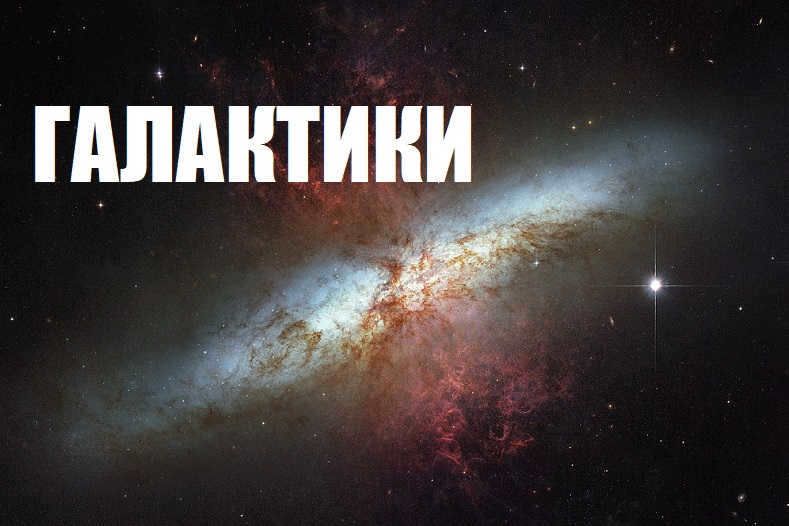
Galaxies, vast systems of billions of celestial objects including stars, planets, gas, dust, and more, revolve around a central point of mass due to the pull of gravity. These cosmic structures serve as the fundamental components of the Universe. They come in various shapes and sizes, ranging from spiral and elliptical to irregular forms. Additionally, galaxies possess distinct characteristics, such as:
- the quantity of stars
- accumulations of gas and dust
- speed of rotation
- the presence of a black hole at the core
Galaxies serve as birthplaces and nurturers of stars and planets. Through the interplay of gravitational forces, they create unique conditions that foster the development of star clusters and galactic spirals.
Studying these incredible celestial entities aids in our comprehension of the phenomena taking place in the cosmos, enhancing our understanding of its formation and development. Astronomers employ a range of techniques and tools, such as telescopes and satellites, to examine galaxies and their characteristics. In turn, this grants us fresh perspectives on our vast Universe.

What galaxy contains the solar system?
Among the countless stars that traverse the universe, the Sun stands out as a remarkable star. It resides in the Milky Way galaxy, which is home to around one hundred billion stars. If a spacecraft were to travel at the speed of light, it would take an astonishing 100,000 years to traverse the vast expanse of the Milky Way.
Our solar system is situated along one of the spiral arms, approximately 30,000 light-years away from the galactic center. Furthermore, the Milky Way rotates, causing our solar system to complete a full revolution around its center every 200 million years. These unique characteristics make our Sun and galaxy truly extraordinary within the vastness of outer space.

Galaxy Varieties: Understanding Different Types of Galaxies
The cosmos is filled with an abundant array of galaxies, each possessing its own distinct attributes. To categorize them, we can classify galaxies into three primary types:
Spiral-shaped galaxies
Spiral-shaped galaxies, like our own Milky Way, feature a central disk composed of older stars. This disk is surrounded by spiral arms that contain a mixture of dust, gas, and younger stars. The distinctive spiral shape of these galaxies creates the illusion of rotation and movement, making them visually captivating when viewed through a telescope.
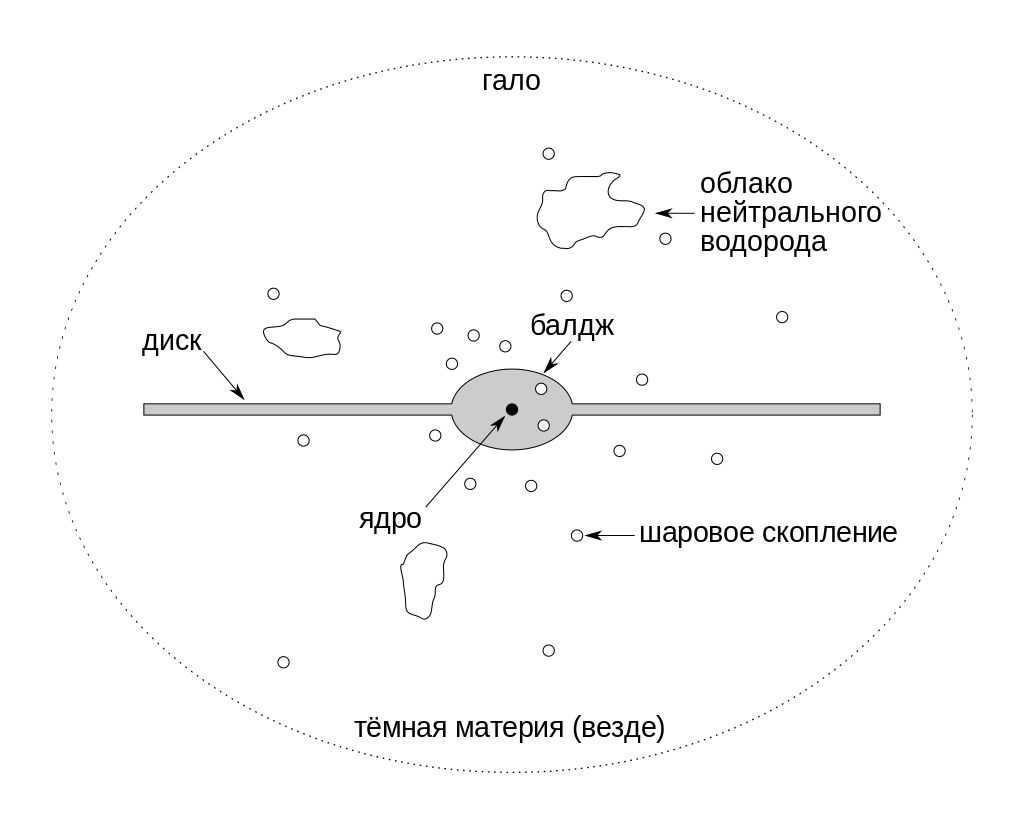
Different Types of Galaxies
Elliptical galaxies are unique in that they have already exhausted their supply of dust and gas needed to form stars. Instead, they appear as smooth spheres made up primarily of large red stars. While their shape can vary from nearly round to elongated, they typically lack the distinctive spiral structure seen in other galaxies.
Irregular galaxies
Unlike other galaxies, irregular galaxies lack a defined shape and instead consist of chaotic collections of stars. Their structure can be distorted or even destroyed due to the gravitational pull of neighboring galaxies or other external factors.
Although some galaxies exist in isolation, the majority are part of clusters that travel together through space. For example, our own Milky Way belongs to a cluster known as the Local Group, which includes over 20 similar galaxies. This cluster, in turn, is part of an even larger structure known as a supergalaxy, located in the constellation Virgo.
Irrespective of their categorization, each of these celestial formations has a vital part to play in the exploration and comprehension of the cosmos. They serve as a reminder of the vast diversity and magnificence that exists in the expanse of outer space.
Galaxies with Active Characteristics
These galaxies are distinguished by their intense energy output. They emit radio signals that can be detected on Earth, which is why they are referred to as “active.” This activity is evident through the generation of substantial amounts of radio energy emissions or the presence of a luminous core.
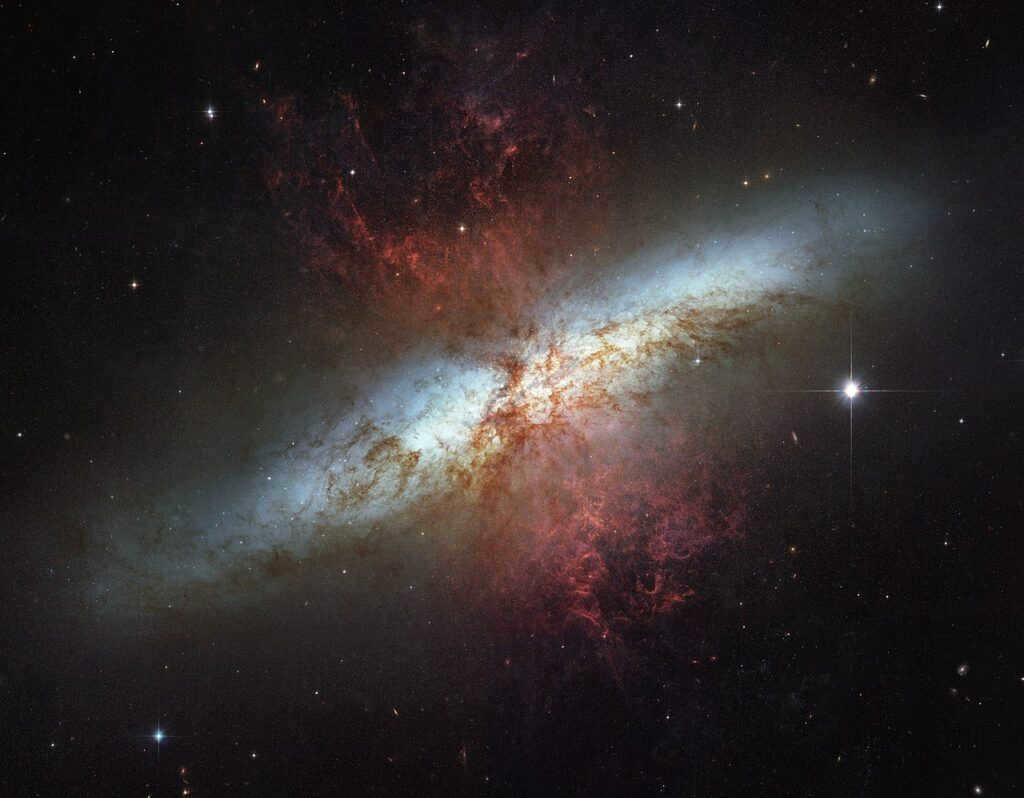
Quasars: A Unique Type of Active Galaxies
Among the various kinds of active galaxies, quasars stand out as a special and intriguing type. Quasars are the cores of massive galaxies that are currently experiencing a highly active phase of evolution. They release immense amounts of energy, making them the brightest objects in the entire Universe. These extraordinary celestial objects can be detected through their intense radio emissions and their brilliantly shining optical light.
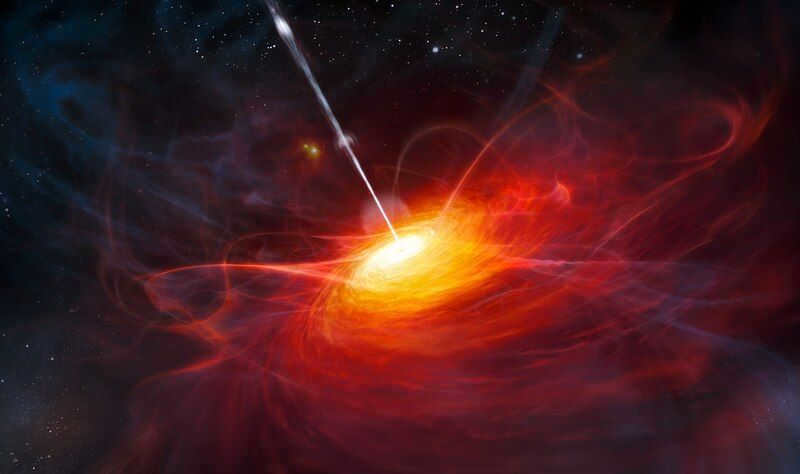

The comprehension of galaxy processes and evolution greatly relies on the advancement of scientific theories concerning active galaxies and quasars. These enigmatic entities continue to captivate researchers as they strive to unravel the deeper mysteries of the Universe.
As per the majority of scientists, the universe was formed around 10-20 billion years ago due to an occurrence referred to as the Big Bang. At that moment, all that existed in the universe was concentrated at a single point. It was a pivotal moment that initiated the ongoing expansion of the universe.
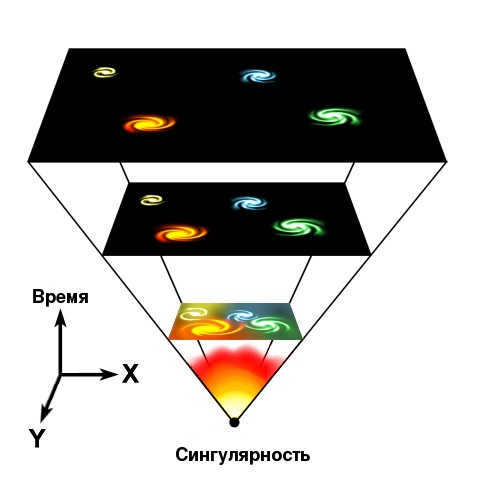
During the time of formation, the universe existed in a highly compact and heated state known as a cosmological singularity, as stated by the Big Bang theory. The primary components of the universe at this stage were primarily hydrogen and helium. As the universe expanded, particles of matter gradually combined and attracted other particles due to the gravitational force. This process eventually led to the creation of massive gas clouds that eventually condensed into concentrated structures referred to as galaxies.
Emergence of Active Galaxies
Active galaxies are a specific class of galaxies that have formed through the evolution of the universe. They exhibit an exceptional level of energy activity, characterized by the emission of radio signals and the presence of luminous nuclei.
During the formation of active galaxies, gas clouds undergo a process of condensation and subsequent merging, resulting in the formation of denser structures. These structures then serve as a prominent source of intense radio emission and energy.
The study of the formation and evolution of the universe, as well as active galaxies, holds significant importance in the field of modern astrophysics. It enables us to gain a deeper understanding of the origin and development of our universe, thereby expanding our overall knowledge of it.
The destiny of the Cosmos
There is still no agreement among scientists regarding the forthcoming evolution of the universe. One potential outcome is the perpetual expansion of the Cosmos. In other words, galaxies will keep moving apart from one another. Stars will gradually lose their heat, resulting in a progressively darker universe.
According to different hypotheses, the gravitational force between galaxies will eventually decelerate and eventually halt. This might trigger the contraction of the universe and ultimately result in its ultimate demise.

